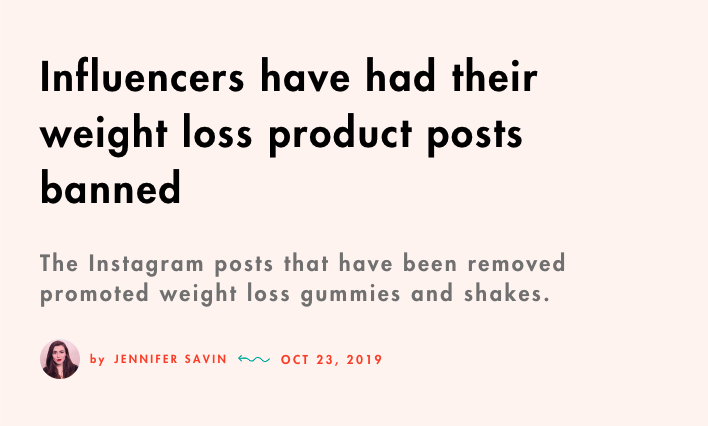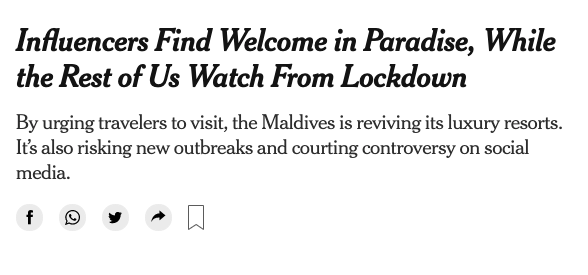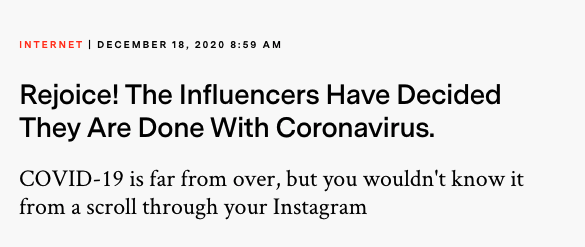Internet influencers and the culture surrounding them, however, are not without criticism.
With the growing dominance of social media and the obsession with stardom seen in younger people (especially teens and young adults), it is no surprise that this advertisement of an envious lifestyle has downsides.
They have a sense of humor and their own perspective, but, more importantly, they exhibit what followers do not have but wish to have (Saul, [ 44] ). Influencers’ postings mostly brag about their luxurious life through high-end fashion items, holidays in exotic locations, interactions with mainstream celebrities, and expensive dinners at famous restaurants (Abidin, [ 1] ; Marwick, [ 38] ). That is, influencer postings are the “catalogs of what many young people dream of having and the lifestyle they dream of living” (Marwick, [ 38] , p. 155).- Chae. (2018) Explaining Females’ Envy Toward Social Media Influencers
Influencers flaunt the impossible to an impressionable audience. The envy that is born from that is often due to the comparisons that an audience makes between their life and the life of the influencer. The reach for the impossible can inspire feelings of dissatisfaction, and can negatively impact self esteem; it can result in mimicry, in which case members of their audience would attempt to feel satisfaction my mirroring an influencer’s lifestyle, oftentimes spending money in needless ways, or picking up unhealthy habits in an attempt to be like those they admire.
There is always the possibility that influencers could promote unhealthy lifestyles. In recent years, influencers promoting weight loss medications or gummies with dubious benefits have come under fire, for the fact that they cater to a young audience, and are encouraging things that can ultimately do damage in both short and long term. It especially applies to things like ideaology and opinions, in which some influencers can promote bigoted or incorrect information on their platform, where young and under-informed audience members can very easily absorb and parrot this info.
Especially in context of the recent year in the United States under COVID-19, influencers and people with big names and audiences have played a part in both promoting safety and downplaying severity, in different social circles. There have been more than a few share of influencer-involved scandals, where the privilege that comes with fame and money has caused them to ignore CDC protocols, only encouraging younger people to do the same.
However, this is not the constant case, as there have also been collaborations between influencers and health experts over promoting COVID-19 safety.
Influencers can be an ideal tool for health communication if they already identify with a target audience, and their content uses the same language and style of speech that the audience uses. In this way, health campaigns can have a look, feel, and sound that will capture an audience’s attention. While the strategy of using unbranded native advertising techniques does not allow for an easy comparison of behavior change associated with campaign exposure, results showed encouraging results among those who reported awareness of a flu vaccine campaign on social media.- Bonnevie et al. (2020) Using social media influencers to increase knowledge and positive attitudes toward the flu vaccine
Though there is a lot to criticize over what an influencer has influence of, there are also examples of cases where their influence can be beneficial for a good cause.



